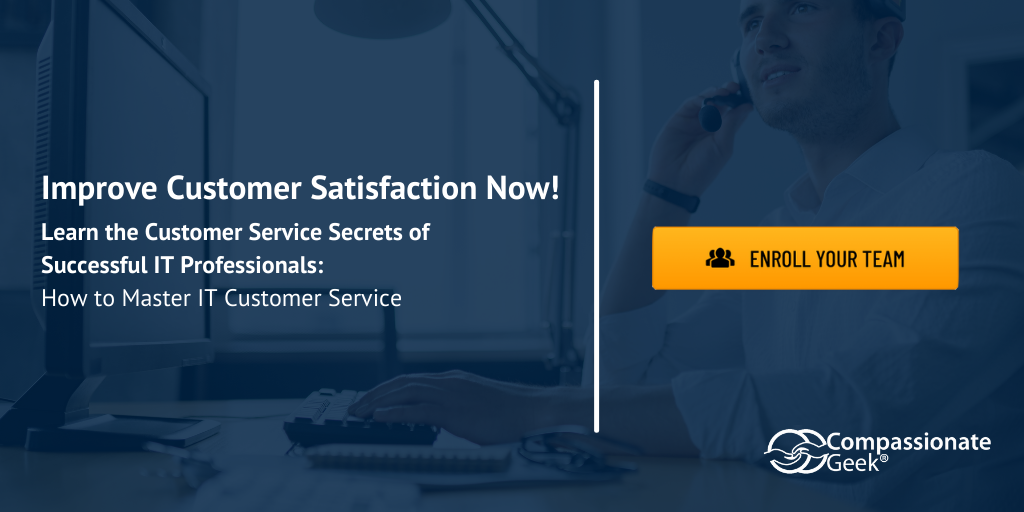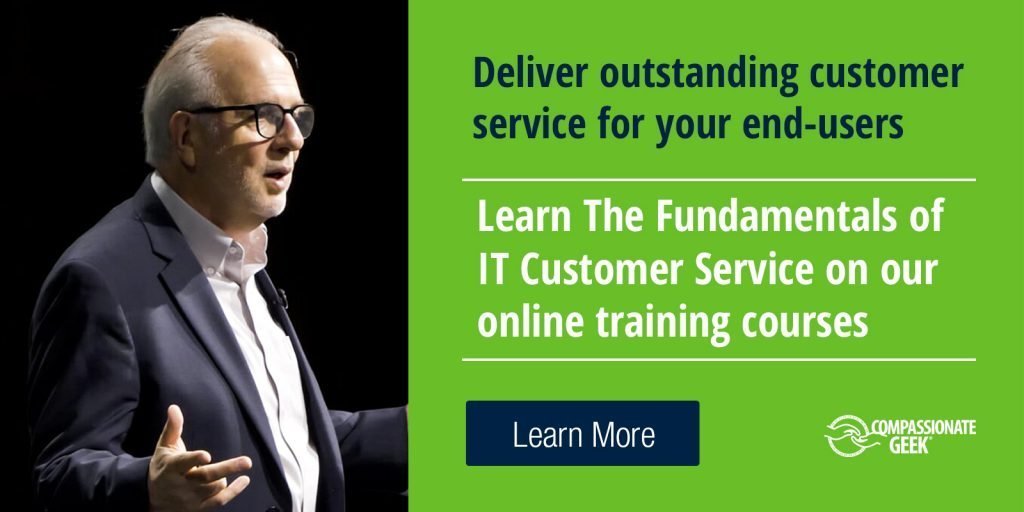Podcast: Play in new window | Download
Subscribe Now Apple Podcasts | RSS
Note: This blog post on career roadblocks is a transcript of an excerpt from my keynote speech How to be a Compassionate Geek.
As we talk about the five principles, are there some roadblocks that might possibly get in your way? And the answer is, of
The Yeah-Buts
The first one is
He said, “Well, people come to me when things aren’t going well. They’ve got financial problems, relationship problems, problems at work. They come to me, and I give them my best advice based on my education, my years of training, and my years of experience. And they say, ‘Yeah, but that won’t work with me,’ or, ‘Yeah, but this is different,’ or, ‘Yeah, but we tried that before and it didn’t work’.” They dismiss it out of hand without even thinking about what he’s saying. And that’s what the yeah, buts are.
I’m not suggesting to you that every piece of career advice that you get is legitimate because that’s not true. But every piece of advice that you get from people whom you respect is worthy of consideration. You think about it, and you process it. So, don’t dismiss ideas out of hand, especially when things aren’t going the way you want. When you’re not getting the responses that you want from other people, when you’re not getting the promotions you feel you deserve, and you go to your boss and say, “I’m not seeing the results that I feel like I should,” and they give you advice, don’t dismiss it with a yeah-but. Be open to it, process it, and think about it.
The Theys
The second roadblock is the ‘theys’. Oh my gosh, that’s when we blame other people for our problems instead of looking in the mirror. It’s when we take an external locus of control as opposed to an internal locus of control.
Let me give you examples of the theys. How many of you are familiar with the ID-10-T error? Judging from the response in the room, quite a few. How about the PEBCAK, problem exists between chair and keyboard? Or the PICNIC, problem in chair, not in computer. Or one of my favorites, it’s a layer eight problem. Layer eight, the OSI reference model, seven layer model, that describes the flow of data across a network. Layer seven in the OSI reference model is the application layer. Well, layer eight is the people. And of course, that’s being facetious, but a lot of us tend to blame the people.
Here’s the thing, when we blame others for our problems, are we simply not accepting the fact that maybe we didn’t design the system well enough, so that it could work seamlessly for our end users?
Let me give you an example. When we say ID-10-T, that’s terribly condescending, and I want to tell you about my wife Janet. Janet is an amazing woman, she’s very, very bright, she has a master’s degree and two undergraduate degrees. She’s highly respected among the people who know her, and she’s a yoga instructor and a ceramic artist. Janet doesn’t give a rip about computers, but she’s very, very bright and she struggles with some of the most basic tasks with computers. Maybe some of you can relate to this. Maybe you support users at your office. Or your neighbors or your family members are the same way, very, very bright but they don’t get computers.
Now, I value my marriage more than anything in the world. There is nothing more important to me than my marriage, and how would it reflect on my marriage if I were to refer to Janet as an ID-10-T? Obviously, that would not be a good idea. So, we need to lose the condescending acronyms and recognize that our jobs in information systems and technology are not about technology. Our jobs are about helping our end users do their jobs more productively, creatively, and efficiently, and, sometimes, in spite of their best efforts to keep that from happening. Our jobs, hear this, are about crafting creative technical solutions to perplexing human problems in the workplace, and if it doesn’t solve a human problem, then what’s the point? So, lose the condescending acronyms, forget about the theys.
The Belief That People Skills are Intrinsic
The third roadblock is the belief that people skills are intrinsic and cannot be learned. I don’t believe that’s true. With rare exceptions, there are some people who have great difficulty recognizing emotions and they struggle with learning people skills, but most of us can learn people skills. They’re simply beliefs and behaviors, and just like anything, they can be learned.
How many musicians do we have in the room today? Raise your hands if you’re a musician. I play the pipe organ, and imagine how it sounds when we’re first learning a first piece of music, right? It doesn’t sound very good. But gradually, we practice and suddenly it starts to feel less awkward and it starts to flow, and it feels more natural, right? Well, it’s the same thing with people skills.
How about golfers? Anybody play golf? Well, it’s the same thing. You’re learning a new swing, and the first time you try it, it’s really awkward, right? And the ball doesn’t soar, it just kind of putters, no pun intended, putters off the tee. But gradually, you practice it and you get better and better. Over a period of time, it feels less awkward and more natural. It’s the same thing with people skills. It just requires a commitment to learning about them with books like Stephen Covey’s great book The 7 Habits, my book, The Compassionate Geek, or Dale Carnegie’s wonderful book How to Win Friends and Influence People, and studying and thinking about it and practicing and getting better. (For more ideas, check out my recommended reading list on this blog.)
Next Level Customer Service Training
Enroll your team now in Compassionate Geek IT customer service training so they can work together, get things done, and take care of customers.





